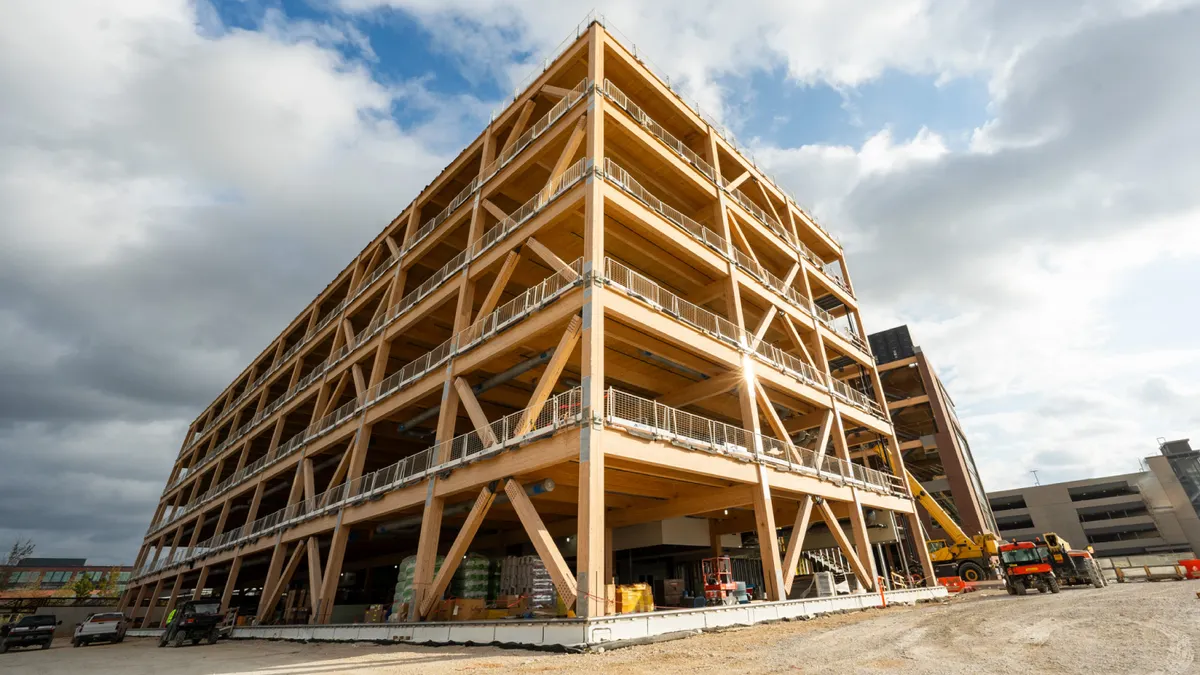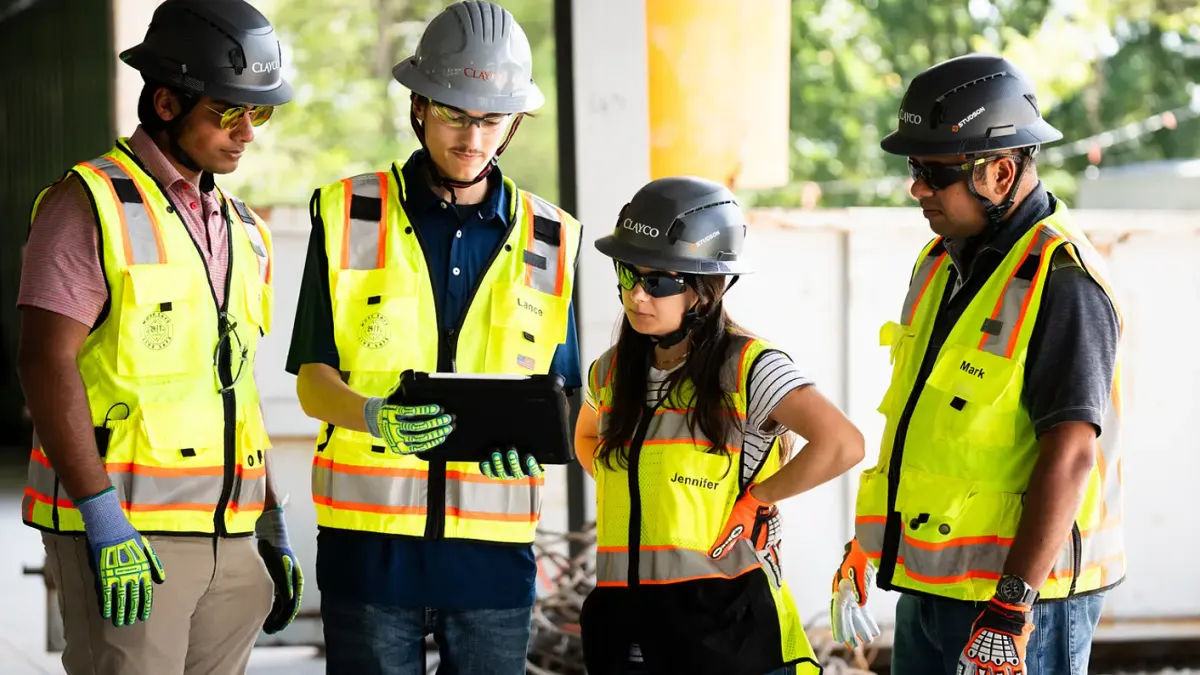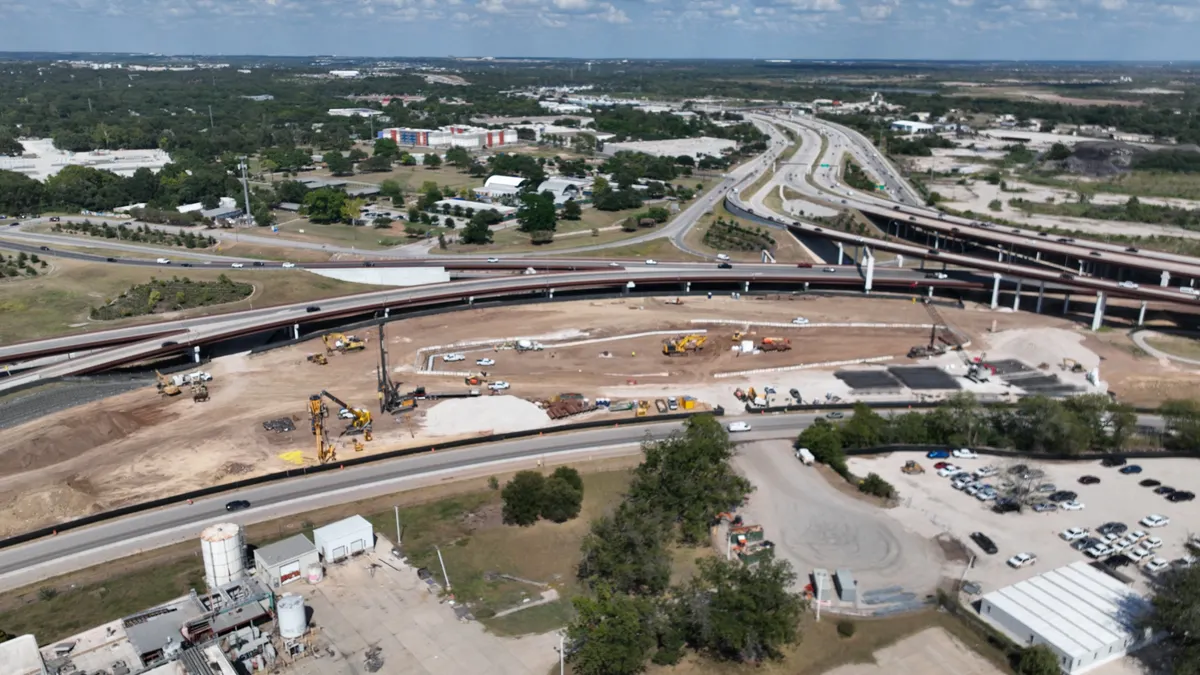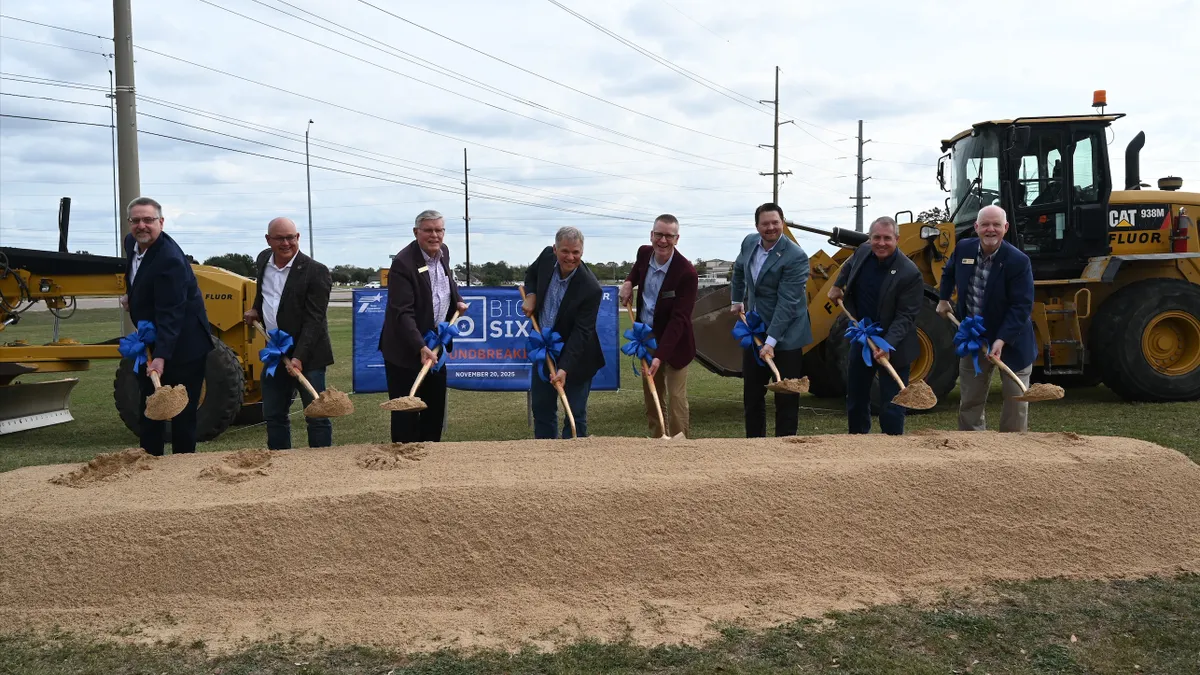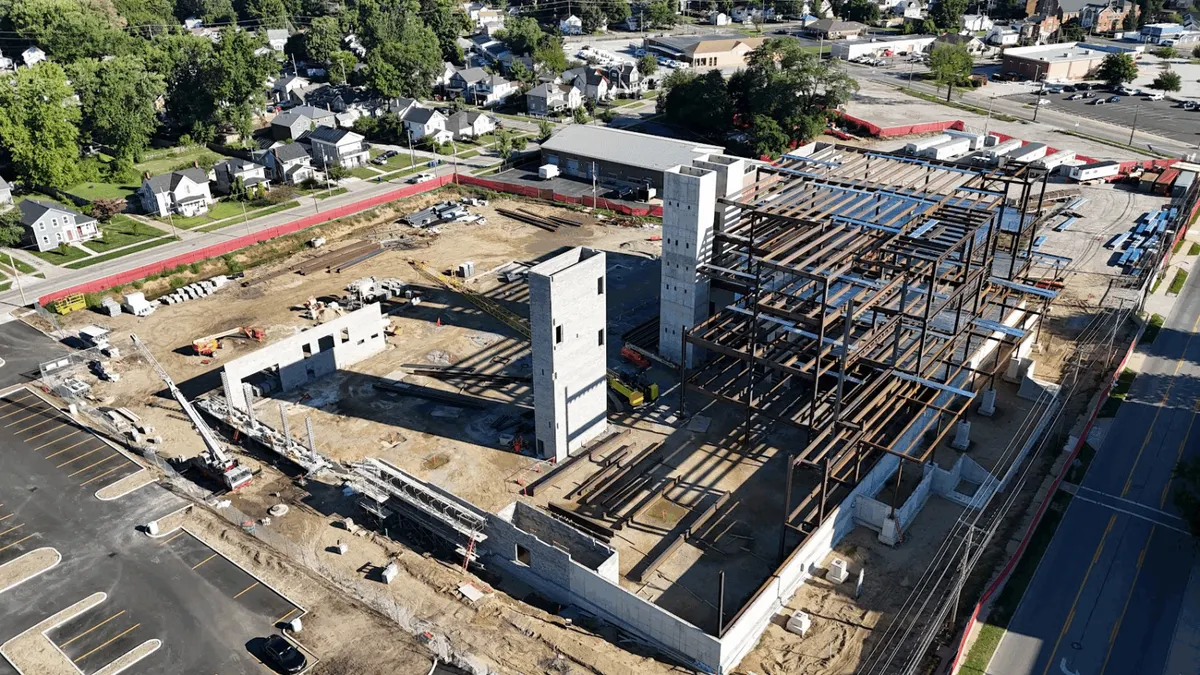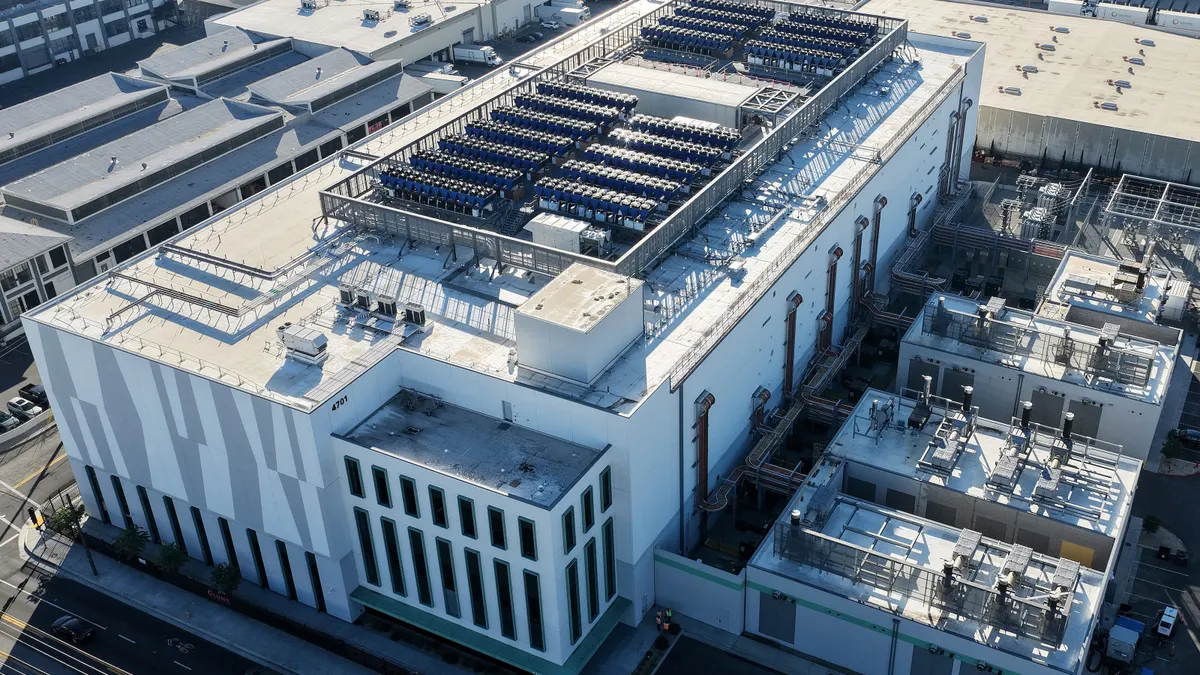With the touch of an iPad, a drone outfitted with a Sony UMC-R10C 20-megapixel camera climbs into the sky above Berkeley, CA, and begins an optimized flight path over the Hanson Aggregates asphalt mixing plant. The drone takes a series of photographs at different angles, uploads the imagery to the cloud and returns to base. By the time it lands — less than five minutes later — a complete volumetric calculation of the aggregate in the Hanson yard has been executed, providing a precise measurement of how much stone has been removed relative to the day before, the week before, or any time period for which comparable imagery data exists.
For 3D Robotics CEO and former Wired magazine editor-in-chief Chris Anderson, the brief demonstration flight at the tech company's headquarters affirms a lifetime aspiration to see robots flying overhead. “What drones have really done is enabled us to put sensors in the sky,” Anderson said at a media event held Nov. 9 on 3D Robotics' rooftop. “We’re extending the internet into the physical universe with robots." The ability to access current, contextual imagery on a construction site to inform logistics and situational awareness, he added, will be the next big wave of small UAV innovation.
In addition to 3D Robotics, drone makers and pure play UAV software providers including DroneDeploy, Identified Technologies and even Intel have pegged the AEC sector (along with agriculture and mining) as a top market opportunity for drones. That market, according to a recent report from PricewaterhouseCoopers, is worth roughly $45.2 billion.
Meanwhile, the global construction market is expected to surpass $10 trillion by 2020, according to data from the Construction Intelligence Center, but nevertheless operates with average margins of less than 1%, Anderson said, and with projects typically seeing 80% cost overruns and 20 month delays. Drone technology is expected to help improve on those efficiency and productivity metrics by integrating project management systems and strategies with real-world, eye-in-the-sky observational data.
As UAV technology begins to take flight in construction, the following five drone trends are worth watching.
1. Dirt movers
With imagery resolution at 200 feet providing half-inch-per-pixel definition, drone-mounted cameras like the UMC-R10C give earth-movers an unprecedented look at grading efficiency and dirt-in-motion.
Mike Winn, CEO and co-founder of San Francisco-based DroneDeploy, said earth-moving is a major market for UAV software services in the construction sector, which is the company’s second-largest business vertical overall. Similarly, Pittsburgh-based Identified Technologies focuses its end-to-end, Drone as a Service offering almost exclusively on graders, excavators and earth-moving contractors.
“Your typical mid-sized earth-moving company is deploying a ton of capital for labor and equipment, so turning topography data and imagery into a tool that can drive better bidding and earth-moving efficiency has been key to excavators,” said Identified CEO Dick Zhang. “The essence of the business is not drone data for the sake of drone data, but determining that you moved X amount of yards on a cost basis to get Y price, and integrating [that] into scheduling and finance software to make billing and payment happen that much quicker.”
3D Robotics' Anderson said topography and materials imagery, along with LiDAR data, is poised to extend beyond earth-moving. When combined with additional Internet of Things scanning sensors and laser measurement tools, they could disrupt the building material supply chain by providing real-time data on inventory and materials.
2. Situational awareness, systems integration
In construction, drones are typically called upon to provide an aerial view of the site from a couple hundred feet in the air, meaning that project team members no longer need to be physically present to see a project's progress.
“The CEO, architect, foreman or safety team can now easily access and look at aerial imagery," Winn said. "That’s the core value: Drones have removed travel as a business constraint.” To provide maximum situational awareness, UAVs are integrating with CAD, BIM and other design and project management software to provide additional data lenses through which to view and interpret imagery data.
“Centralizing all of these inputs to the management process is critical for making better decisions based on job site situational awareness,” said Anderson, who shared a preview of how 3D Robotics integrated its Site Scan flight optimization and analytics software with Autodesk.
At DroneDeploy, users can likewise take advantage of data integration with 3-D printers that will produce a scale model of a job site to be shipped to project stakeholders.
3. As-designed vs. as-built
Drone imagery and data integration with CAD and BIM software is providing AEC professionals with specific tools for gauging project compliance and identifying where real-world construction is veering off course. The ability to pinpoint deviation from a plan is expected to positively impact budget and project delivery by reducing costly change-orders before construction errors occur.
“What’s exciting about the drone space is that we have already done a great job digitizing what we are planning to build,” said Autodesk strategic projects executive Tristan Randall. “Until drones, we didn’t have a great process for taking data in from the physical world and making BIM contextual to the job site.”
With that integration, Anderson said, project teams can compare as-designed and as-built versions with a simple drone flight.
4. Single-touch flights
The Federal Aviation Administration's commercial drone regulations notwithstanding, drone makers and software providers are quickly moving to optimized pre-flight programming, data capture and analysis that can be achieved with the single touch of an app button. The 3D Robotics Site Scan technology, for instance, lets users define scan areas by drawing a polygon on an aerial view of the job site.
“A lot of our construction clients had originally intended to manage pre-planning and post-flight data transfer and analytics in-house but quickly found that process to be resource intensive,” Identified Technologies' Zhang said.
Indeed, push-button UAV flights are meant to eliminate the need for a drone specialist on site to manage flight operations and provide business intelligence from UAV data analysis. “The flight systems are becoming so easy to use that as soon as we close the gaps on the data management side, we’ll be on our way,” Randall said. “The idea is to democratize technology by lowering the price point and by integrating systems so [it] doesn’t require multiple-domain knowledge.”
5. One quad does it all
While Intel’s recent flight, in Germany, of 500 drones in formation monitored by a handful of people, had a specific purpose — putting on a light show — the demonstration offered proof of concept (and an FAA exemption) for the simultaneous use of multiple UAVs for commercial applications. But with most construction flight optimization software designed to minimize time in the sky, observers aren’t yet sure that multi-drone flights will find a use case among AEC operators.
“What’s more interesting is the ability to have a single drone perform high-frequency flights for data collection and comparative analysis,” Anderson said. To that end, job sites may soon have dedicated space for a standby drone or two, but swarms of quadcopters don’t seem to provide additional value, yet.
Fixed-wing UAVs have also largely disappeared from the AEC radar, as the technology capable of scanning extremely large areas has found little use beyond highway construction. At DroneDeploy, fixed-wing UAVs provide only 6% of the aerial data captured by the company.
“The advantage with quads is versatility,” Randall said. “They can take off from anywhere and land anywhere, and now that we are executing a take-off, mission and landing with one green button, the automation capability of the quadcopter for construction is clearly superior.”
Drone technology's adoption among construction firms is expected to continue as software and systems manufacturers amp up ease-of-use and analytics services to increase productivity, efficiency, safety and security on the job site.
As hardware, however, drones are still tools that will need to fit into the existing construction workflow and not be proffered as a complete and final solution to project management challenges. “Drones are not going to be a silver bullet,” Randall said. “They’re only a better, simpler, faster way of getting job site data and making actionable decisions.”



